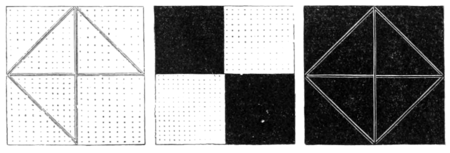fragment of moulding, compared with Hearne's report in 1732, that there was a tradition, and a tradition only, all remembrance being lost, "that there had been once a town here," over which he describes timber trees then to grow, would give us limits, and not very wide ones, for the period of its destruction.
The abbat and canons of Oseney had a portion of tithes here, small indeed, as being worth at the Dissolution only 10s. per annum, but sufficient to give them an interest in the place, and justify their application to Richard, or a less wealthy proprietor, for assistance in raising the house of God. And as no traces of an established ecclesiastical benefice appear, it is probable that the cure was served, as was not unusual, by members of their house; and that those who rest under the three tombstones, yet remaining within the limits of the walls of the edifice, may have been chaplains who ended their days in the performance of their duties on the spot.
It should be observed that the greater part of the encaustic pavement was not set as before an altar, but between the tombstones represented; many smaller fragments being found dispersed. It had on the east side a border of similar tiles, each 5 inches square, and marked checquer-wise across the middle, so as to form four divisions, which were coloured alternately yellow and black, or very deep brown. The effect was by no means pleasing; but it is a curious fact, that the same border is found represented on some painted glass, known from several circumstances to be of very high antiquity, now placed in the church of Rivenhall, Essex. It was purchased from a church near Lisieux in Normandy, and fixed where it may be seen at present, at the expense of the Rev. Bradford Hawkins, curate of the parish.
The intersecting and diagonal lines do not seem to be merely ornamental, but were made before the tile was burnt, for the purpose, it is supposed, of enabling the mason to break off with his trowel certain portions of a prescribed shape. J. W.

